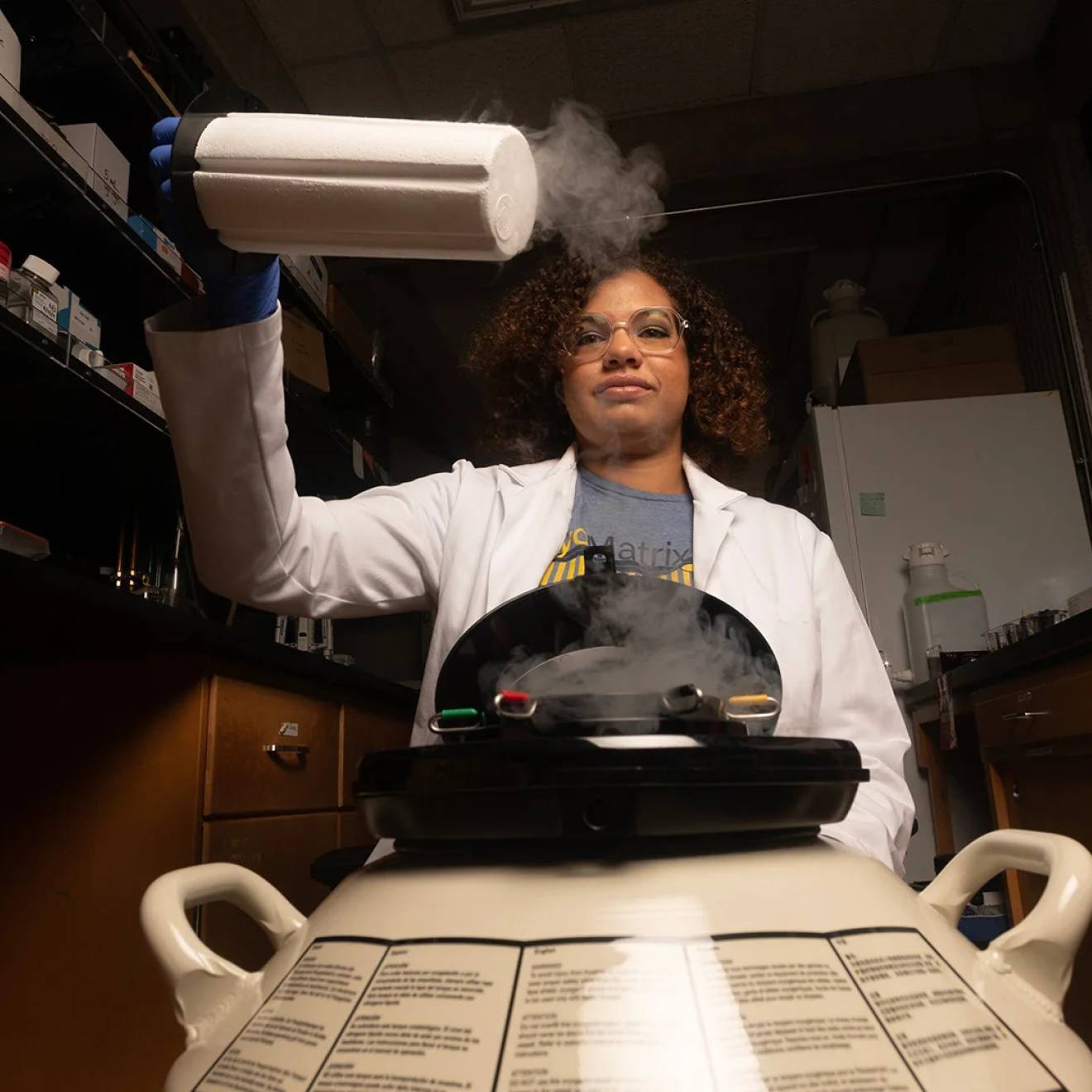Kathleen Wong, UC Natural Reserve System
Enterprising UC Berkeley engineering students have gone into the spy business. Over the past semester, they have developed two compact, remote-controlled aircraft. The purpose of these flying machines: to keep tabs on UC Natural Reserves.
You might think Natural Reserve System (NRS) scientists would be looking over their shoulders in fear. Instead, they’re thrilled at the prospect of having electronic eyes hovering overhead.
By next year, the scientists hope to collect scientific data with the aircraft. The devices will observe hard to reach corners of the NRS’s Angelo Coast Range and Blue Oak Ranch reserves.
The flying machines are the fruits of collaboration between the NRS and Berkeley’s engineering department. Instructor George Anwar learned about the needs of NRS scientists from engineering professor Paul Wright, who also serves as director of the Center for Information Technology Research in the Interest of Society (CITRIS). The NRS had cosponsored a workshop the previous fall with CITRIS where field scientists described research problems that could be addressed with better technology.
Engineering students, Anwar realized, could bridge that gap. His course requires students to develop a final course project. That project could be technology tailor-made for the NRS.
Anwar believed working with the NRS would be a prime opportunity for students. “These problems bring about engineering challenges that are not in any textbook,” Anwar says. “The students have to write proposals and meet the client’s specifications. That is a real-world situation.”
Early in the semester, Anwar invited several NRS scientists to present their research problems to the class. Michael Hamilton, director of the NRS’s Blue Oak Ranch Reserve, wanted to track seasonal phenomena. These could include the extent of wildflower blooms, measurements of plant greenness, assessments of water levels and pond plants, and even bird and squirrel counts. Such information helps scientists monitor climate change and relationships between environmental conditions and species.
But Blue Oak Ranch Reserve is very large. Hiking or driving to the many sites Hamilton wants to monitor could take all day. Hamilton hoped for an airborne camera that could record conditions at the same locations over time so he could collect this data almost automatically.
Berkeley biology professor Mary Power had a similar dream. Power researches aquatic food webs at the NRS’s Angelo Coast Range Reserve. Stringy algae growing in the Reserve’s river gradually changes color from green to rust between spring and late fall. This color change corresponds to changes in populations of diatoms that colonize the algae. Diatoms are able to take nitrogen from the air and incorporate it into their tissues. By increasing the nutrients available in the stream, Power has found, diatoms give aquatic insects the energy boost they need to lay eggs.
To advance this work further, Power wants to monitor color changes in algae along the river from spring to summer. This will enable her to determine the level of diatom colonization over a large area, and to calculate nutrient levels to improve her food web models. This technique could be used to monitor changes in aquatic food webs across entire watersheds—critical information about stream health in an era of dramatic climate change.
The scientists inspired two teams of engineering students to step forward. For Power, students proposed grafting a Styrofoam plane with functional propellers to a shark balloon that “swims” through the air. The balloon would allow the plane to stay aloft for longer and travel at slower speeds, while the plane would help the balloon turn and lend it extra thrust. The plane’s built-in camera would gather algae color data.
After strapping both toys together, the engineering students modified their steering mechanisms to work in unison. Lastly, they hacked the navigational systems of the two toys to enable control by a single remote—a jury-rigged Wii controller.
Power plans to use the dirigible mostly in spring and summer, over a river sheltered by stands of mature trees. Helium in the balloon and the plane’s propellers should be enough to keep the device in the air for over an hour.
“It was an interesting opportunity. You have this interfacing of two different fields: researchers who are actually out in the field, who have real-world problems and concerns, and mechanical engineers in a class just learning this material,” said William Bullington, a member of the dirigible team. All four team members are looking forward to moving the project forward and applying it to a real problem even after class ends.
Hamilton wanted a more robust device able to withstand weather and winds for years. Because sturdy aircraft are expensive, Hamilton bought the parts using reserve funds.
The finished quadcopter roughly resembles a lug wrench with propellers on all four arms. Lightweight yet powerful, this quadcopter carries a digital camera, a sophisticated microcontroller, and a global positioning system (GPS) unit. Future student groups will be asked to program it to travel to certain locations using GPS-linked maps.
The quadcopter team was equally eager to apply their skills to benefit NRS science. “The fact that we were going to build something that would be used in the real world was very exciting for us. We wanted to make it amazing so the natural reserve would have something right away that they could use,” said team member Andrew Deng.
NRS scientists are pleased with the results of the partnership. “This effort was well worth working with the class. As a first start I am pleased to have a unit that flew, can sustain flight long enough to collect high-definition imagery, achieves the desirable altitude, and will serve as a platform for further improvement in successive prototyping classes,” Hamilton says.
The partnership with the NRS could become a regular fixture of the engineering department, instructor Anwar says. “Eventually we might even start forming a student club that does this. Around here, there’s always a group that likes the outdoors and hiking, and to be able to tie engineering to this is just wonderful.”

